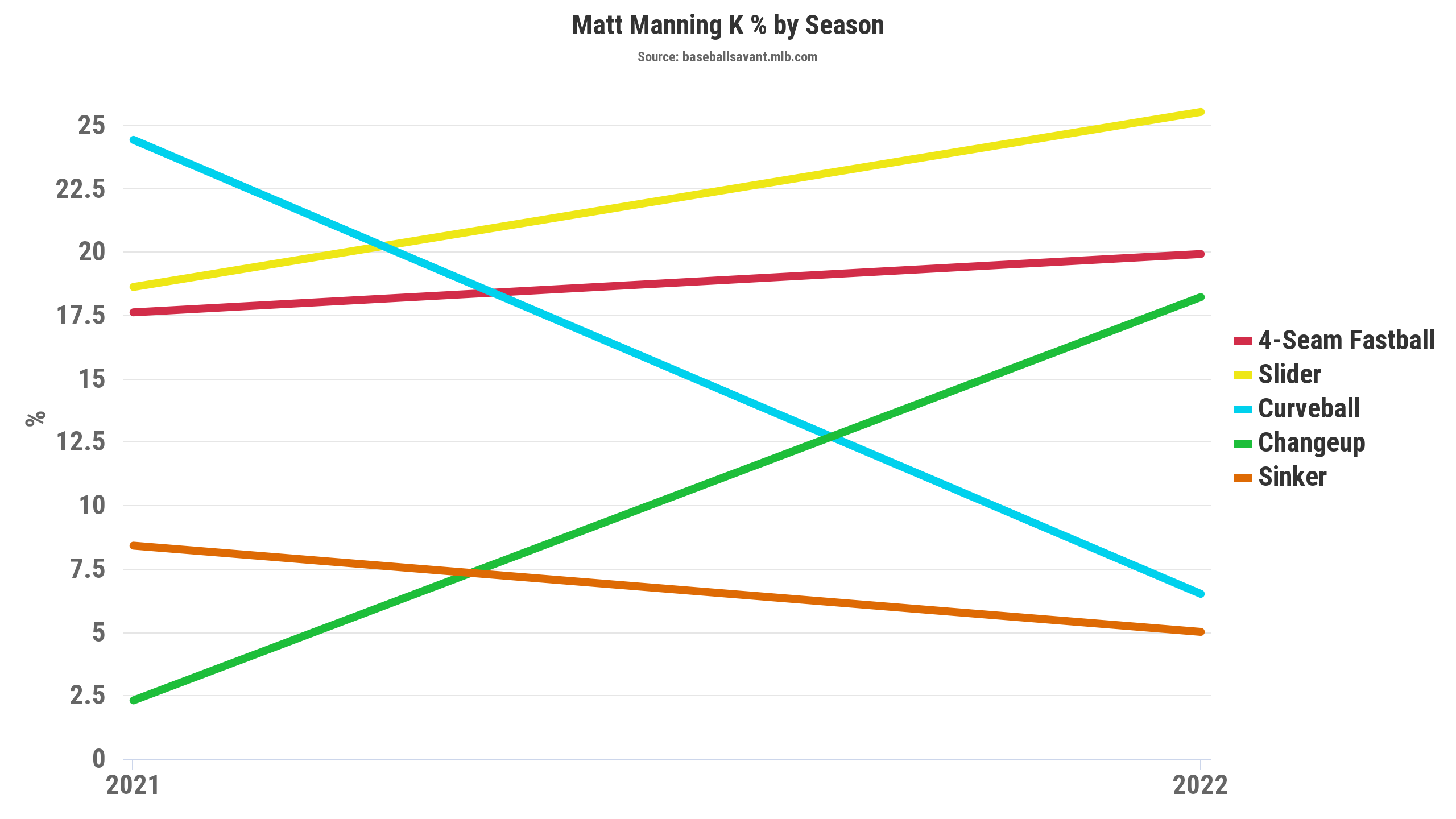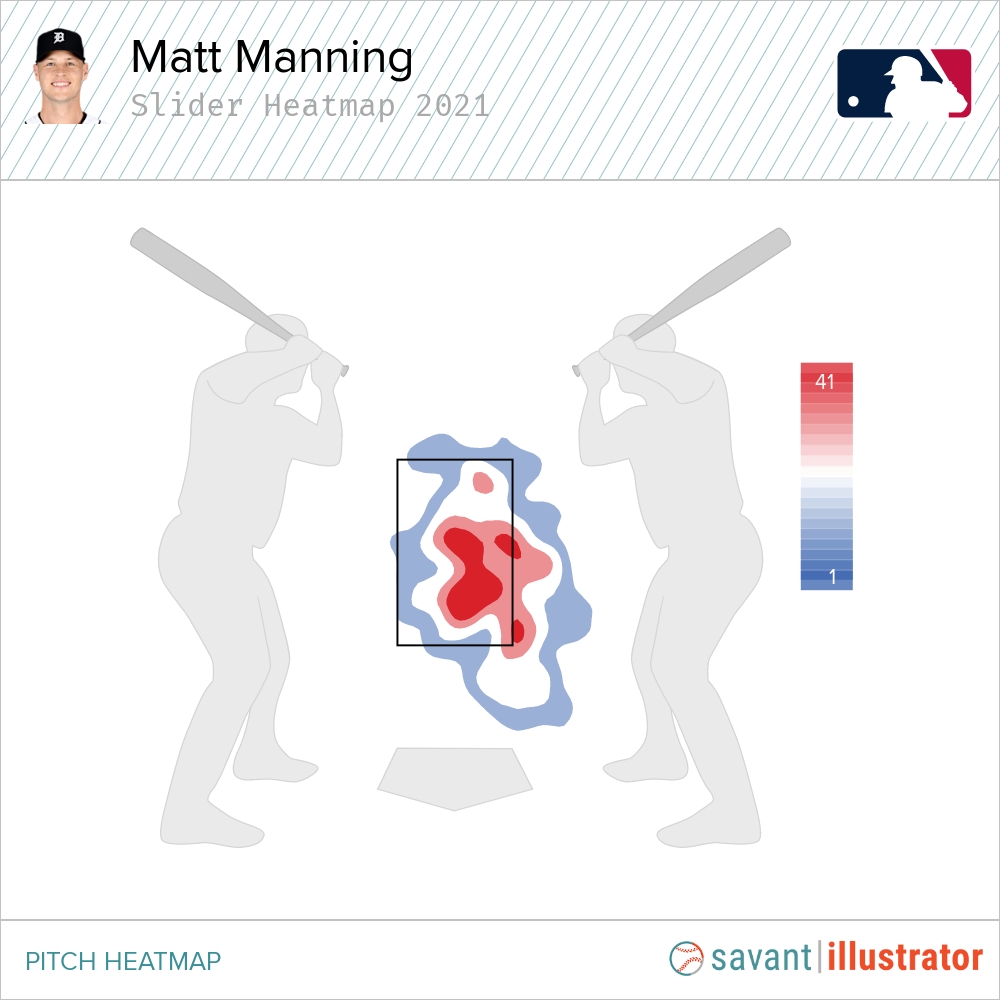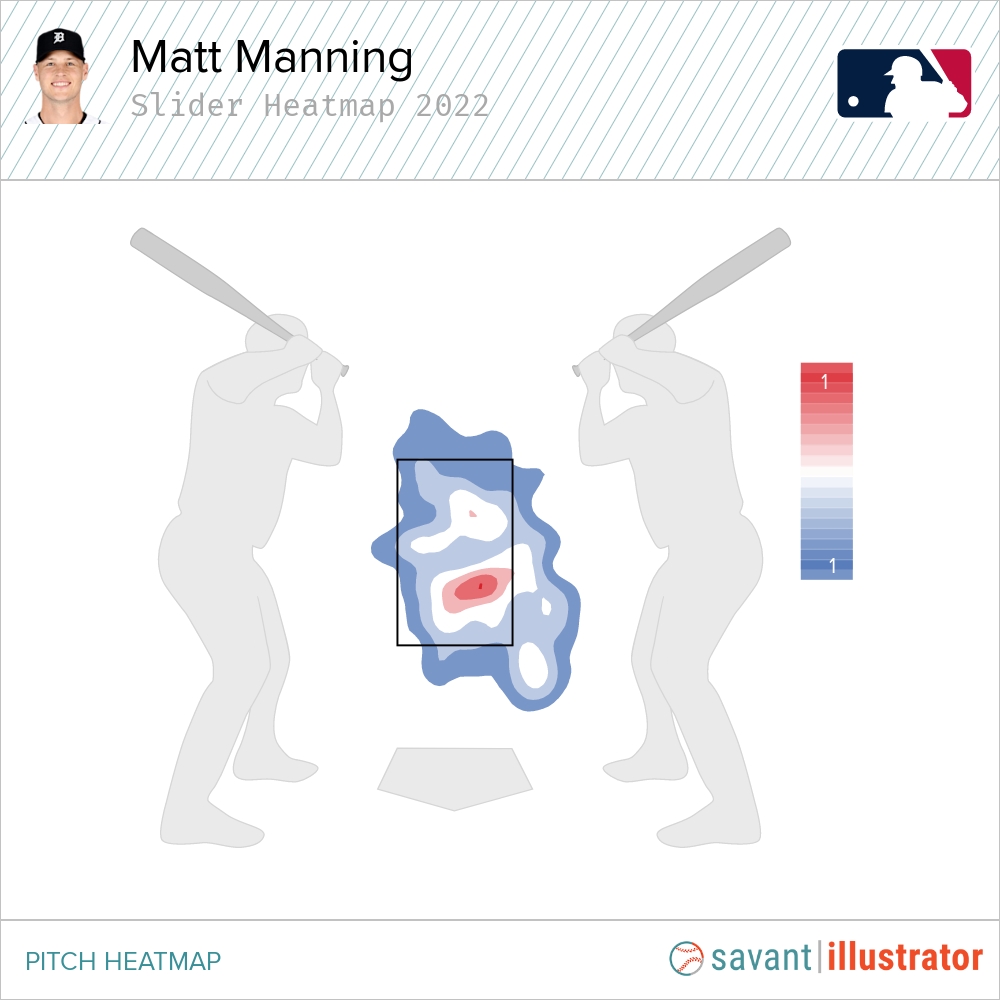Going into last season, the Detroit Tigers had a rotation chock full of young pitchers and upside. Unfortunately, due to injuries, the outlook for this Tigers rotation, especially in 2023, is in question.
Casey Mize and Tarik Skubal were predicted to be the Tigers’ No. 1 and No. 2 starters for the long haul. Much to the Tigers’ chagrin though, they both went under the knife last season for Tommy John and Flexor Tendon surgery, respectively. As of now, it is unlikely that either pitcher will have much of an impact for this upcoming season, a bummer for a squad coming off of a 66-win season.
That leaves Matt Manning as the lone pitcher from that young core who can be expected to earn innings this year for Detroit, though he has dealt with his own share of injury issues a season ago. Manning dealt with inflammation in his right shoulder that put him on the shelf for 118 days. Hence, it’s not a surprise that he was limited to only 12 appearances and 63 total innings last season.
Lost in Manning and the Tigers’ pitching staff’s general injury issues though was Manning’s development as a pitcher from his rookie season in 2021 to his sophomore campaign a year ago.
Even though he pitched 22.1 fewer innings in his sophomore season, Manning saw solid improvement in his ERA (5.80 in 2021 to 3.43 in 2022), FIP (4.63 in 2021 to 3.78 in 2022), and K-BB% (6.2 percent in 2021 to 11 percent in 2022).
While Manning may not have the MLB track record that Mize and Skubal have, it is possible that he may be on his way to being the Tigers’ “ace” of the future. At the very least, he can be a top-of-the-rotation homegrown option for the Tigers for a long time, as long as he’s healthy.
And the progression of his four-seam fastball could be a key indicator of whether or not Manning begins to fill that role for Detroit as soon as this season.
The Four-Seamer From 2021 to 2022
In his rookie year, Manning’s primary pitch was still his four-seam fastball, as he threw the pitch 41.3 percent of the time in 2021. However, he also frequently used his sinker, which he threw 19.5 percent of the time, according to Baseball Savant.
That said, the high usage of those two kinds of fastball didn’t do him any favors in his rookie season.
His four-seamer only produced a K rate of 17.6 percent, and his sinker produced a K rate of 8.4 percent as well, both underwhelming rates. In addition, the run value data on both his four-seamer and sinker in his rookie year left a lot to be desired, as illustrated in the table below:
The simple truth for Manning was this:
Utilizing both those pitches at a fairly high rate was not making him effective as a starting pitcher, especially in a crowded rotation in Detroit.
In 2022 though, Manning changed his approach with the help of Tigers pitching coach Chris Fetter, who Manning had been working diligently with since Manning broke into the big leagues.
At the end of the 2021 season, Fetter has been working with Manning to improve the velocity of his four-seam fastball by driving off the back rubber more. Here’s what Cody Stavenhagen of The Athletic said about Manning’s development in a September 10th article back in 2021:
We don’t have data for what Matt Manning has done in the minors, but there’s no doubt he has been undergoing as much transformation as anyone this year. He began trying to develop a new, tighter breaking ball in spring training. He basically scrapped the pitch at the start of the Triple-A season, then had to pick it up once again after his promotion to the majors. Manning has continued adjusting his mechanics, trying to drive off his back foot and become more explosive with his delivery, in an attempt to generate more consistent velocity.
“Diving into the biggest changes Tigers pitchers have made in 2021” by Cody Satvenhagen; The Athletic.
What’s interesting to note is Manning’s four-seam velocity slightly dipped from 93.5 MPH in 2021 to 93.2 MPH in 2022.
Despite the slight regression in four-seam velocity, he still increased the usage of the four-seamer and decreased his sinker usage in his second season in the Majors. As a result, the four-seamer became a go-to pitch on a swing-and-miss as well as batted-ball end last year.
Here’s a look at how his run value data fared on the four-seamer and sinker last season:
Manning increased his four-seamer by 10.1 percent in 2022 (and consequently decreased his sinker usage by 11.9 percent). Consequently, his four-seam run value improved by 10 runs, and his sinker run value improved by four runs. Furthermore, his four-seam K rate increased by 2.3 percent, and the hard-hit rate of batted balls decreased by 1.8 points as well.
What Was The Main Difference?
A lot of articles about Fetter’s work with Manning seemed to focus on seeking to improve his fastball velocity at the end of the 2021 season.
That said, it seems like the biggest improvement that Manning made with the four-seamer from 2021 to 2022 was simply improving his command of the pitch.
Based on approach data from Pitcher List, Manning improved in 2022 when it came to hitting areas of the zone that would make his four-seamer more effective. In the table below, it’s important to pay particular attention to his aLoc% (arm side location); hiLoc% (pitches located higher than the batter); and heLoc% (middle-middle location).
Manning saw positive gains in aLoc% and hiLoc% with the four-seamer and a 0.70-point decline in heLoc%. As a result of throwing the four-seamer in less-hittable areas, Manning saw his put-away rate (PAR%) improve by 2.50 points from 2021 to 2022, a positive trend that Tigers fans should be encouraged about for 2023.
To give a visual of Manning’s command improvement, here’s a look at him locating the four-seamer in that high, arm side area of the zone to generate a strikeout of Andrew Vaughn.
https://gfycat.com/jollycoolgerenuk
And now let’s take a look at him throwing the four-seamer in 2021, but without that pristine command.
https://gfycat.com/questionableoldfashionedhuman
Now, Manning still is able to strike out Milwaukee’s Eduardo Escobar in this at-bat. But it’s obvious that it isn’t in an ideal area of the strike zone in a 2-2 count.
If Manning throws that pitch in the same area of the strike zone to a better hitter, especially at 93 MPH, the results are a whole lot different, like this base hit from Tommy La Stella back in 2021:
https://gfycat.com/quarrelsomeacademicgenet
In terms of mechanics, it seems like Manning moves a bit quicker in his windup pace in 2022 in comparison to 2021 (notice the slight pause in his windup when facing Escobar in 2021). In addition, it also appears that his four-seamer has a bit more vertical rise in 2022 as well.
That said, the data doesn’t necessarily back up those confirmations, which can be seen in the data set below.
The horizontal and vertical movement numbers are pretty much the same in 2022 from Manning’s rookie season. In terms of tempo, Manning was slightly quicker last year, but it is a minuscule difference.
How Does It Impact His Secondary Pitches?
There is a slight improvement in his four-seamer’s K rate, put-away rate, and whiff rate from 2021 to 2022. That being said, the biggest impact of his four-seamer improvement may be on his secondary pitches, primarily his slider.
Here is a look at the K rate trends of his pitches from 2021 to 2022, via Baseball Savant. Notice the positive growth in his slider from his rookie season:

Via Baseball Savant
Thanks to better four-seam effectiveness, there were positive trends in his slider, and even the changeup when it came to striking batters out.
Now let’s take a deeper dive into the run values of his secondary offerings to get a better sense of which secondary pitches were impacted the most from 2021 to 2022.
The curveball saw the biggest decline in his secondary offerings. It not only went up in run value (four to be specific) but also saw a 17.9 percent decline in K rate as well from his rookie season. And even though his K rate on his changeup improved, he also saw negative regressions in xwOBA and run value, which deflates the optimism a bit with the pitch.
The slider on the other hand improved in nearly every category in the table above, which explains the six-run improvement from 2021 to 2022. Manning’s slider not only generated more swings and misses last season, but also did a better job of limiting hard contact as well from his rookie season.
It is interesting to see how Manning’s slider’s location changed from 2021 to 2022, via a pitch heatmap comparison.
- Via Baseball Savant
- Via Baseball Savant
Obviously, the 2022 heatmap on the right is a lot more advantageous, because he’s throwing the slider a lot less in the middle of the strike zone. However, the particular primary location of the slider is fascinating when one thinks about how he sequences it with his four-seamer.
Here’s a look at that sequence on a four-seamer and slider in similar areas of the zone in what should be a “hittable” area.
https://gfycat.com/generalfaroffhorsemouse
As one can see, it is tough for opposing hitters to adjust based on the velocity and movement difference, even when thrown in similar areas of the strike zone (Evan Longoria and Austin Hays learned that the hard way).
It will be intriguing to see how that sequencing continues to develop in 2023, and if the slider will continue to pair effectively with Manning’s four-seamer in the long term.
If it does, then it wouldn’t be surprising to see Manning ascend the ladder in the Tigers rotation this year, especially with Mize and Skubal on the shelf.
How Does Manning Compare To Similar Pitchers?
When it comes to determining Manning’s fantasy value going into 2023, it is a bit of a hazy situation.
Nick Pollack in his Top 200 Starting Pitchers for Fantasy Baseball ranking back in October listed Manning at 158th, ahead of other young pitchers like Adrian Houser, Daniel Lynch, and JT Brubaker. On the other hand, he ranked behind other pitchers who went through growing pains in 2022 like Elieser Hernandez (153rd) and Paul Blackburn (157th).
When it came to long-term value, it seemed to make sense to compare Manning to other 23 to 24-year-old pitchers who didn’t accumulate a whole lot of innings in 2022 but are expected to have an impact in 2023 (much like Manning). Below is a list of those pitchers, and some of their general five-category numbers from last season.
Now, some may think that these pitchers are not a fair comparison to Manning, especially since Cabrera and Gore are Top-100 starting pitchers, and Elder and Bello are in the Top-150, according to Pollack.
In upcoming drafts though, whether they are re-draft leagues or keeper/dynasty ones, it is possible that Manning could provide similar value to these other four in 2023 but could be picked up considerably later in most draft formats.
When it comes to K and BB rate data, Manning actually compares pretty favorably.
He doesn’t offer the high-strikeout upside of the four, especially Cabrera. On the other hand, he had the lowest BB/9 of the bunch and also posted the best K/BB ratio as well, which can be seen in the table below:
On the other hand, Manning does pale in a couple of areas, especially when diving deeper into plate discipline and Statcast metrics.
While Manning did the best job of the five when it came to throwing strikes consistently (measured via zone percentage), he allowed the most contact of the bunch, and also finished last of the group in CSW rate by a big margin as well.
Furthermore, there were also concerning signs for Manning when it came to what hitters did when they made contact with Manning’s pitches in 2022. Manning benefitted from an abnormally low .259 BABIP in his sophomore campaign, which partially explains why his ERA and FIP compare favorably to the other four.
On the flip side, he had the second-highest average exit velocity on batted balls of the group, and there were some other Statcast metrics of Manning’s that stuck out, which can be seen below:
There’s no question that Manning is still a work-in-progress for the Tigers and fantasy managers who may be intrigued by picking him up in drafts for the upcoming 2023 season.
He may not be at the same level as Cabrera, Elder, Bello, or Gore just yet, but the gap isn’t as pronounced as some may think.
His four-seam development was a big reason why Manning produced a better-than-expected sophomore campaign. In addition, with Fetter back as pitching coach, and some veterans ahead of him in the rotation (Matthew Boyd, Eduardo Rodriguez, and Michael Lorenzen, according to Roster Resource), it’s likely that Manning can continue to “develop” at a reasonable pace in his third year at the MLB level.
That said, it’s not just Mize and Skubal anymore when it comes to the future of the rotation in Detroit. Manning has earned some discussion based on his growth last year.
And he could be an even bigger part of the puzzle in 2024 and beyond, especially if he continues to refine his four-seamer and develops how his secondary offerings play off that primary pitch in 2023.
Steven King/Icon Sportswire | Adapted by Matt Fletcher (@little.gnt on Instagram)



